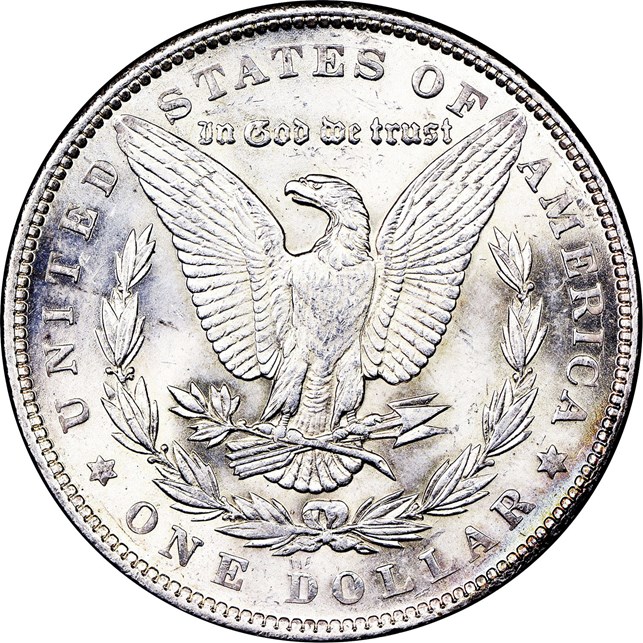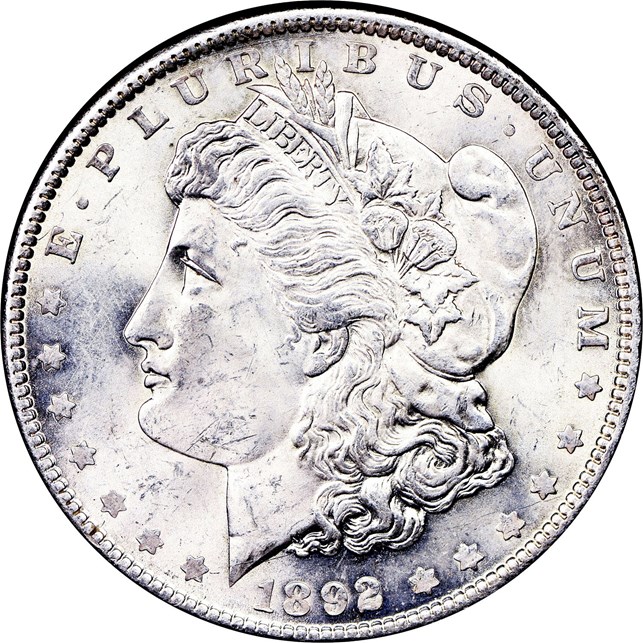USA Coin Album: Why Was There Not a Barber Silver Dollar?
Posted on 8/14/2018


Since the commencement of silver coinage in 1794, the United States Mint had maintained uniform designs for all denominations from half dime through dollar. While the two smallest pieces did not always include an eagle on their reverses, the obverse of each fractional piece mimicked that of the silver dollar, though it sometimes took two or three years to implement fully. (The three-cent piece adopted in 1851 was the sole exception, carrying a distinctive design to denote its debased metallic content of just .750 fine silver). A rupture occurred in this uniform series with the debut of the Morgan Dollar in 1878, and it was reinforced 14 years later when the three fractional silver coins were given an entirely new design. There's more to this story than meets the eye, and it's worth exploring further.
Mint Director Henry R. Linderman was not impressed with the artistry of Chief Engraver William Barber. When it was determined in 1876 that the fractional silver coins were due for a makeover, the Seated Liberty figure then being some 40 years old, Linderman wrote to his counterpart at Britain's Royal Mint, Deputy Master Sir Charles W. Fremantle, seeking a new artist of broader imagination than Barber. (The greatly increased mintages of silver coins beginning the previous year provided Linderman the excuse that this move was performed simply to assist with the Mint's workload). Recommended was George T. Morgan, who was offered and accepted a commission as Assistant Engraver under Barber.


In 1877 Morgan prepared a series of splendid pattern coins, primarily using the half dollar denomination, as this would be the largest of the coins to bear his standardized design. The plan to adopt a new uniform coinage of dimes, quarters and halves, however, was abruptly discarded with the passage of the Bland-Allison Act early in 1878. This mandated a massive coinage of standard silver dollars, an issue last struck five years earlier and thought to have been retired once and for all. The huge demand for dollar dies prompted Linderman to adopt the best of Morgan's models for the dollar, and the planned redesign of the fractional silver coins was put on hold indefinitely.
Linderman's successors were not as impressed with the Morgan Dollar as he had been, and when a new law was passed September 26, 1890, Congress seized the opportunity to retire that imagery. This legislation authorized the Mint Director, with the approval of the Treasury Secretary, to revise any coin design that had been in use for 25 years or more. Interestingly, a clause was added that "nothing in this section shall prevent the adoption of new designs or models for devices or emblems already authorized for the standard silver dollar and the five-cent nickel piece as soon as practicable after the passage of this act." These two coins had not reached their minimum statutory lifespan in 1890, yet so disliked were Morgan's dollar and the nickel created by Charles Barber (William's son) that the legal restriction on redesign specifically exempted them.


The very next year, Mint Director Edward O. Leech announced a public competition seeking new designs for the three fractional silver denominations. Why was the unpopular dollar excluded from this program? The likely answer is found in another law dated July 14, 1890. Mandatory purchases of silver bullion for coining into dollars were set to end July 1, 1891, with the only coinage thereafter being made from bullion already acquired before that date or whatever was required to redeem the Treasury Notes issued under that law. With the end of silver dollar production looming, it must have seemed pointless to adopt a new design for a dying denomination. This thinking would prove to be in error, as events later revealed.
It turned out that the submissions of would-be artists within the general public were of no value whatsoever, so Leech simply instructed Chief Engraver Charles Barber to create the models for the dime, quarter and half. The September 26, 1890 law had provided for temporarily hiring outside artists of proven merit in the creation of coin designs, but Leech evidently elected to avoid agitating Mr. Barber, who was quite protective of his role. This became evident in 1892, when Barber clashed with Augustus Saint-Gaudens over the design of an official medal marking the World's Columbian Exposition. It would not be the last instance of such rivalry between Barber and outside sculptors, and the clashes of 1907-16 make for some juicy reading.


Barber's new silver coins debuted at the beginning of 1892, breaking forever the tradition of matching designs for all silver issues. While the dime through half dollar bore identical busts of Liberty, Morgan's dollar soldiered on without change. The termination of silver dollar coinage did not come for another dozen years, as so much bullion had already been purchased under the 1878 and 1890 laws that it took until 1904 to finally exhaust the supply! Numismatists were deprived of a Barber Silver Dollar, which would have been quite impressive alongside its smaller siblings.
David W. Lange's column, “USA Coin Album,” appears monthly in The Numismatist, the official publication of the American Numismatic Association.
Stay Informed
Want news like this delivered to your inbox once a month? Subscribe to the free NGC eNewsletter today!
